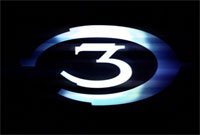Browsing the Telegraph‘s video stream (now there’s an interesting idea for a newspaper), I came on this.
Category Archives: Technology
reCAPTCHA
This is a really smart idea.
Thanks to Pete for the link. And to James Miller for the link to the BBC report.
And thanks to Tony Hirst for explaining that CAPTCHA stands for “Completely Automated Public Turing test to tell Computers and Humans Apart”.
Say cheesy

A snip from the specification of the SONY Cybershot T70 compact digital camera.
Technology, said Heidegger, “is the art of arranging the world so that one doesn’t have to experience it”. Cue some of the new SONY Cybershot range which come equipped with a ‘smile shutter’ that recognises grinning subjects and then automatically takes a shot. Apparently, when several people are in the shot, the shutter only fires when the main subject – who must be manually selected – smiles. A sequence of six smile shots can be taken without manually pressing the shutter.
Good news for air-guitarists
From Technology Review…
It’s every guitar player’s nightmare: you step onstage, strike your rock-god pose, triumphantly strum the first chord of a song–and discover that your guitar is out of tune.
A new line of instruments from Gibson Guitar now promises to banish this scenario to the dark ages with high-tech self-tuning technology built into the company’s flagship electric-guitar models.
The idea is drawing both kudos and criticism from guitar professionals and purists. On blogs and forums around the Web, some players call it an inexcusable crutch for sloppy players. Others, particularly those who use different tunings for different songs, say it could be a godsend.
Either way, the system is a sign that the music world’s digital transformation is reaching ever deeper, even into the rarefied circles of high-end analog instruments…
How to do it

Halo 3 arrived from Amazon today, and so I guess no homework will get done today in the Naughton household. Sigh. But behind the delivery is an interesting story about customer service.
We pre-ordered Halo 3 ages ago, along with another game. Then the launch date for the second game slipped — to November. I assumed that Amazon would then split the order and deliver Halo 3 on launch day. Came the day and the postman was anxiously awaited by the Naughtons. No Halo 3. None the next day either. And so it went on. Eventually — yesterday — I went onto ‘Track My Order’ on Amazon.co.uk and found that Halo 3 hadn’t been dispatched. Wading through the site to find a way of communicating with Amazon, I came on a button labelled (I think) ‘Phone Call’. I clicked on it, entered my mobile number and 30 seconds later the phone rang. It was a real human being wondering what the problem was. He looked up the order, found that the Halo 3 shipping date was bound to that of the other game, asked me if I’d like to cancel the second order, and scheduled Halo 3 for immediate dispatch.
After hanging up, I looked in my inbox — to find two emails from Amazon one confirming cancellation of the second order. The other asking me for feedback on whether the phone call had been helpful.
A long time ago, I wrote in the Observer that Amazon was really just a world-class customer-service outfit that happened to be on the Web. I was right. I wonder how many other firms can match that kind of performance.
Argument 2.0: update
The Argument 2.0 experiment continues. Martin’s opening shot has been followed by Ray’s riposte. Next up is Patrick McAndrew.
Harnessing collective IQ for reviewing patent applications
Interesting Technology Review report on “Opening Up the Patent Process”…
A new website called Peer-to-Patent intends to harness the power of online collaboration to streamline patent review. By creating a community around each application, the site facilitates public discussion and lets people upload relevant information. The United States Patent and Trademark Office (USPTO) is currently involved in a limited trial of Peer-to-Patent, with the hope that it will bring openness and transparency to a review process that was previously limited to communication between the applicant and the examiner vetting the patent.
“There’s never been a bridge built between the information available in these expert communities and the government institutions that make these important policy decisions,” says Peer-to-Patent founder Beth Noveck. Noveck is a professor at New York Law School and the director of the school’s Institute for Information Law and Policy. She is also the director of the Democracy Design Workshop, which is running an experiment, called Do Tank, to encourage research into projects that foster community and encourage citizens to take action.
Peer-to-Patent could benefit an overloaded government organization. The USPTO faces mounting difficulties stemming from large numbers of patent applications of increasing complexity. According to the USPTO, 173,771 patent applications were approved in 2006. The government agency claims that it is currently backlogged with more than 800,000 patents. This means that new submissions have a pendency, or time from filing to first action, of up to 52 months…
Argument 2.0
Martin Weller has started something interesting:
I am starting something of an experiment today for the rest of this week.
I am going to construct an article by structuring a debate across four blogs. The article is around the future of content and starts in my next post.
The plan is:
Monday – I post a piece on where I think digital content is going, arguing that it is moving towards being free and widely distributed.
Tuesday – Ray Corrigan is going to post a piece responding to mine which looks at how digital rights may make it a more, not less, controlled future for content.
Wednesday – Patrick McAndrew will focus it on education by bringing in the perspective from open educational resources.
Thursday – Will Woods will look at some of the relevant technologies and how these might impact.
Friday – we’ll draw some conclusions.
It’s an intriguing idea. The only problem is the timescale. Martin’s opening contribution covers a lot of ground and begs many questions. If Ray can respond effectively in 24 hours, then he’s a quicker thinker than I am.
Keyboard skill
 Like many people who write for a living, I’m obsessed with keyboards. I loved the early IBM PC keyboards, which had proper microswitches and made an agreeable clacking sound. But then mass production took hold and the tactile attractiveness of keyboards declined, to the point where most of them had a repulsive mushy feel. Unusually for a company that is supposed to care about design and ergonomics of laptop drive, Apple ignored the keyboard for many years. The ones supplied with successive iMacs were as unsatisfactory as anything produced by the PC industry. And the keyboards on some (though not all) PowerBook models also left much to be desired. (The best, in my experience, was the keyboard on the original G4 Titanium PowerBook). But now, suddenly, someone at Apple decided that things should change. The new wireless keyboard is simply delicious to use. And it’s a marvel of economical compression which fits neatly into my laptop case. The battery holder serves as a wedge that tilts the keyboard at a good angle for typing. And the on-off switch is neatly built into the end. As the man said, sometimes the right thing is the right thing to do.
Like many people who write for a living, I’m obsessed with keyboards. I loved the early IBM PC keyboards, which had proper microswitches and made an agreeable clacking sound. But then mass production took hold and the tactile attractiveness of keyboards declined, to the point where most of them had a repulsive mushy feel. Unusually for a company that is supposed to care about design and ergonomics of laptop drive, Apple ignored the keyboard for many years. The ones supplied with successive iMacs were as unsatisfactory as anything produced by the PC industry. And the keyboards on some (though not all) PowerBook models also left much to be desired. (The best, in my experience, was the keyboard on the original G4 Titanium PowerBook). But now, suddenly, someone at Apple decided that things should change. The new wireless keyboard is simply delicious to use. And it’s a marvel of economical compression which fits neatly into my laptop case. The battery holder serves as a wedge that tilts the keyboard at a good angle for typing. And the on-off switch is neatly built into the end. As the man said, sometimes the right thing is the right thing to do.
Ad Blocking and the future
This morning’s Observer column…
I have seen the future, and it’s scary. Well, scary for some, anyway. I installed Adblock Plus from adblockplus.org. This is a plug-in – ie, a small program that adds some specified capability to an internet browser. Its purpose is to strip out all the ads that today litter many web pages. I installed the Firefox version and, believe me, it does what it says on the tin…
